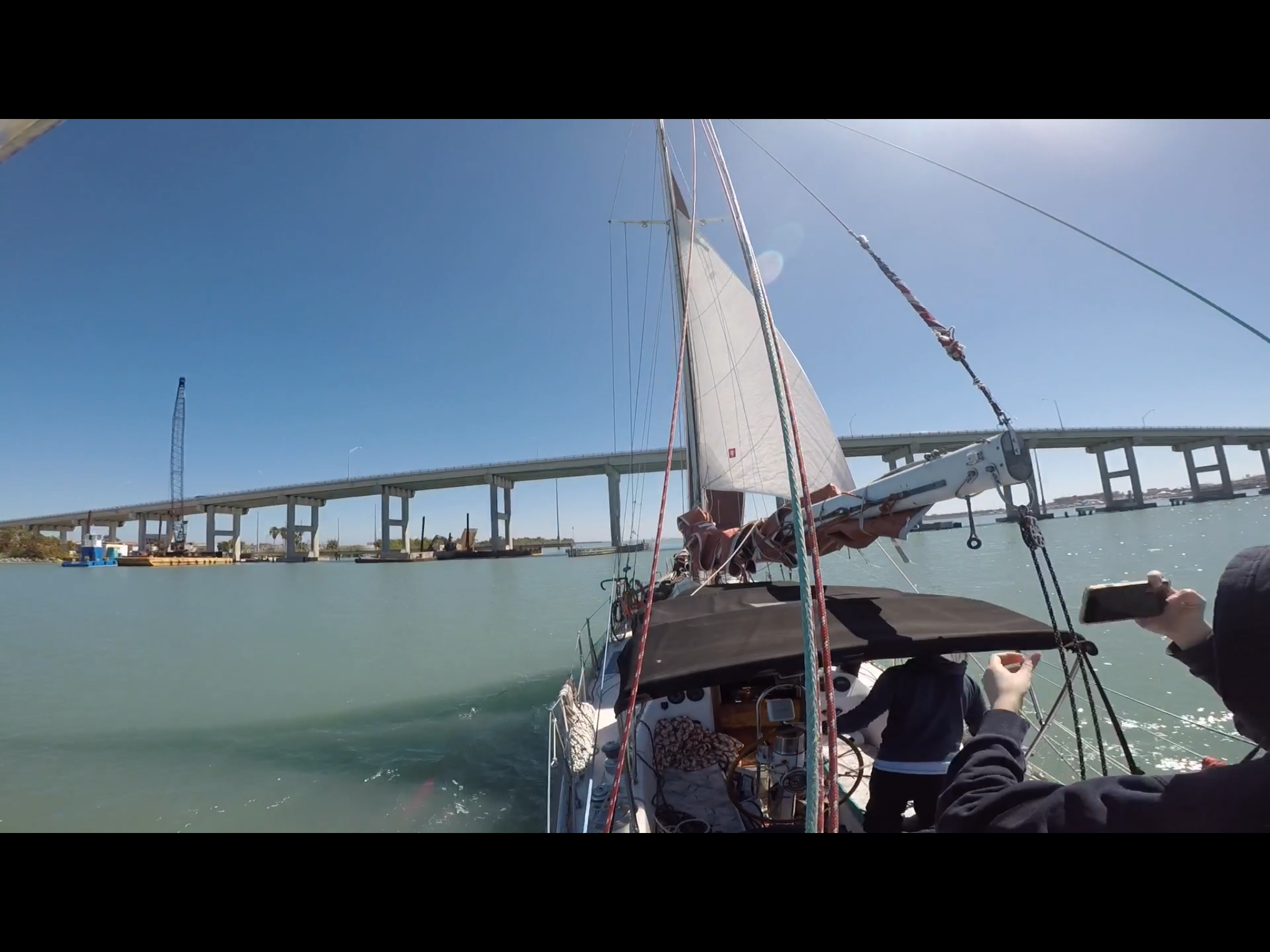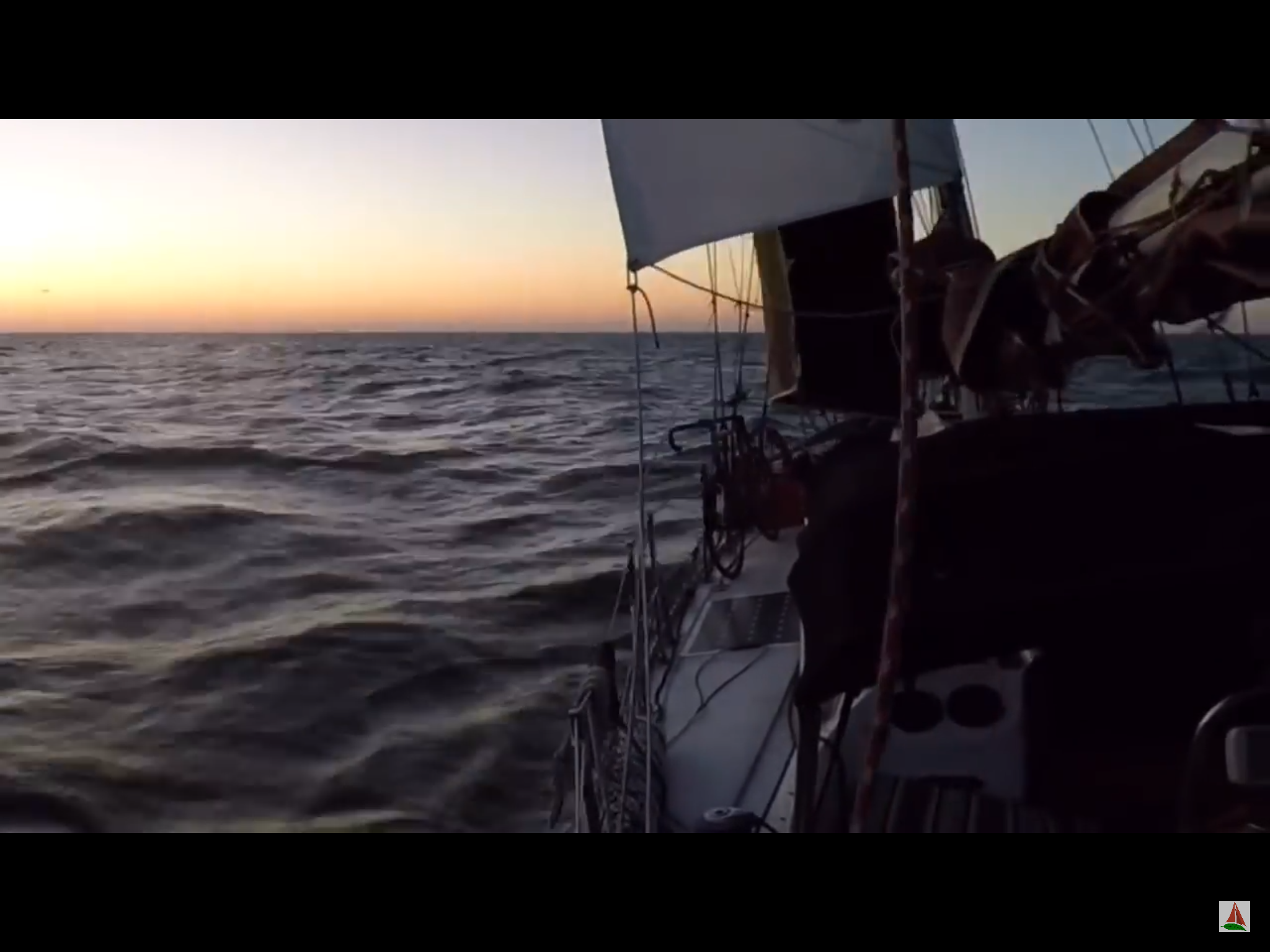The goal with sail balance is to have your sails steer the boat, and the rudder simply help hold the course.
In balanced sails will pull the yacht hard upwind or down, meaning that if the sails are not set to the course, your rudder will have to fight them the whole way there.
When running, it feels pretty tempting to ease the mainsail all the way out. This will present the most sail area to the wind, pushing you downwind, but it also does something unwanted.
The mainsail will become a large area of sail to one side of the boat, and will try to act as a lever arm, pushing the boat to turn in the opposite direction. If the main is on the port side, the boat will try to turn to starboard. If the main is to starboard, the boat will twist to port.
This problem is called weather helm, and usually corrected by easing the main, or reducing its area. Since the main has been eased as much as possible at this point, the only option left is to reduce its area.
As the main comes down, the desire for the yacht to veer upwind will minimize and the downwind pull of the headsail will keep the yacht right on course.
Yes, this yacht could go faster if it were also flying the mainsail, but it would have to work on keeping the helm straight as it traveled. Sometimes, slowing down and reducing sail area will make the entire journey easier and more pleasant.
Next time you are setting your sails, consider which direction you want to go and set the sails that would be most advantageous in reaching that goal, strike any sail that will make your life harder and enjoy your voyage!






